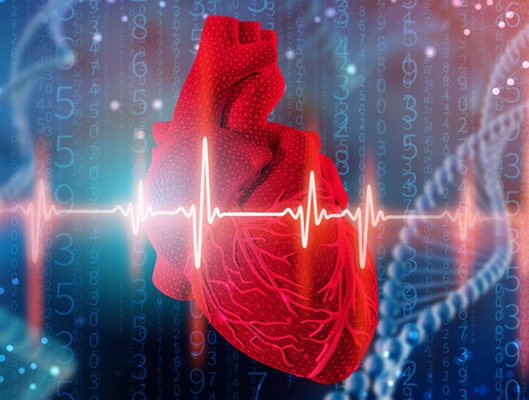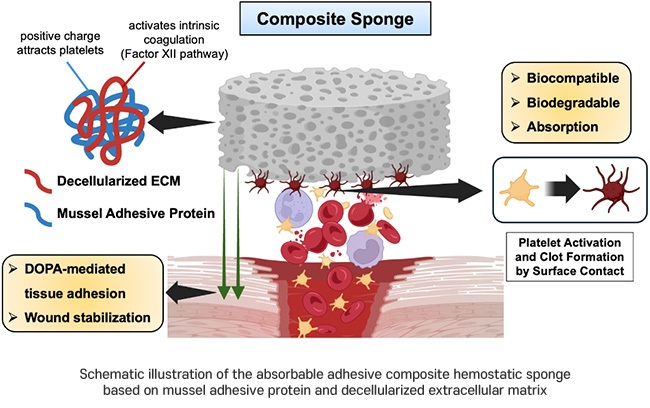Pulse Wave Diagnosis Helps Estimate Cardiovascular Risk
|
By HospiMedica International staff writers Posted on 08 Apr 2014 |
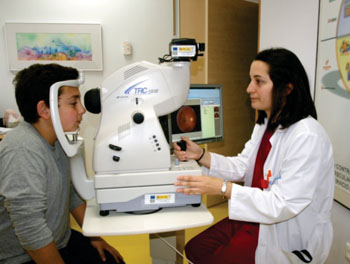
Image: Dr. Empar Lurbe Ferrer conducting a fundus examination (Photo courtesy of Hospital General de Valencia).
New software helps clinicians assess future cardiovascular risk by examining the structure of the eye in children.
Researchers at Hospital General de Valencia (Spain), Universitat Politècnica de València (Spain), and the Ophthalmology Unit of the Foundation for the Health and Biomedical Research of the Comunitat Valenciana (FISABIO-Oftalmología Médica, Valencia, Spain) have developed specialized software to make an in-depth study of the retinal microvascular architecture in children born with low birth-weight.
Pediatric patients undergo various noninvasive tests and all of them are interpreted together, giving as a result an approximation of what is happening in the children’s vessels. Among the tests are pulse wave morphology and speed of the blood as it travels through the vessels, and how it returns. Another test is a fundus scan with a nonmydriatic retinal camera to define the caliber and the branching angle of the retinal vessels to understand blood circulation. The measurements can indicate if a child who has a different branching angle could have an increase in blood pressure over the years.
Using the software, the researchers and pediatricians are analyzing the relationship between the various measurements and adult diseases such as hypertension or cardiovascular problems. By learning more about the retinal attributes of these pathologies as they appear in the newborn, the researchers can possibly determine characteristics that could imply a higher cardiovascular risk when the child reaches adulthood.
“Children with intrauterine growth retardation are those who are at a greater risk of developing cardiovascular diseases, such as hypertension or type 2 diabetes,” said Empar Lurbe Ferrer, MD, head of the pediatrics unit at Hospital General de Valencia. “Because of this, we are using the measurements to see if the branching angles of the vessels of children who have intrauterine growth retardation are different than those who do not.”
“This joint work between engineers and pediatricians aims to provide better care for pediatric patients,” said telecommunication engineer Sandra Morales, a researcher at the LabHuman technology center of the Universitat Politècnica de València. “Our system permits us to establish objective connections between different vessels and help clinical staff to detect these pathologies at the earliest stage. As a result they will help give more personalized treatments.”
Related Links:
Hospital General de Valencia
Universitat Politècnica de València
Foundation for the Health and Biomedical Research of the Comunitat Valenciana
Researchers at Hospital General de Valencia (Spain), Universitat Politècnica de València (Spain), and the Ophthalmology Unit of the Foundation for the Health and Biomedical Research of the Comunitat Valenciana (FISABIO-Oftalmología Médica, Valencia, Spain) have developed specialized software to make an in-depth study of the retinal microvascular architecture in children born with low birth-weight.
Pediatric patients undergo various noninvasive tests and all of them are interpreted together, giving as a result an approximation of what is happening in the children’s vessels. Among the tests are pulse wave morphology and speed of the blood as it travels through the vessels, and how it returns. Another test is a fundus scan with a nonmydriatic retinal camera to define the caliber and the branching angle of the retinal vessels to understand blood circulation. The measurements can indicate if a child who has a different branching angle could have an increase in blood pressure over the years.
Using the software, the researchers and pediatricians are analyzing the relationship between the various measurements and adult diseases such as hypertension or cardiovascular problems. By learning more about the retinal attributes of these pathologies as they appear in the newborn, the researchers can possibly determine characteristics that could imply a higher cardiovascular risk when the child reaches adulthood.
“Children with intrauterine growth retardation are those who are at a greater risk of developing cardiovascular diseases, such as hypertension or type 2 diabetes,” said Empar Lurbe Ferrer, MD, head of the pediatrics unit at Hospital General de Valencia. “Because of this, we are using the measurements to see if the branching angles of the vessels of children who have intrauterine growth retardation are different than those who do not.”
“This joint work between engineers and pediatricians aims to provide better care for pediatric patients,” said telecommunication engineer Sandra Morales, a researcher at the LabHuman technology center of the Universitat Politècnica de València. “Our system permits us to establish objective connections between different vessels and help clinical staff to detect these pathologies at the earliest stage. As a result they will help give more personalized treatments.”
Related Links:
Hospital General de Valencia
Universitat Politècnica de València
Foundation for the Health and Biomedical Research of the Comunitat Valenciana
Latest Critical Care News
- Swallowable Pill-Sized Bioprinter Treats GI Tract Injuries

- Personalized Brain “Pacemakers” Could Help Patients with Hard-To-Treat Epilepsy
- Microscopic DNA Flower Robots to Enable Precision Medicine Delivery
- Origami Robots to Deliver Medicine Less Invasively and More Effectively
- Improved Cough-Detection Technology Aids Health Monitoring
- AI Identifies Children in ER Likely to Develop Sepsis Within 48 Hours
- New Radiofrequency Therapy Slows Glioblastoma Growth
- Battery-Free Wireless Multi-Sensing Platform Revolutionizes Pressure Injury Detection
- Multimodal AI to Revolutionize Cardiovascular Disease Diagnosis and Treatment
- AI System Reveals Hidden Diagnostic Patterns in Electronic Health Records
- Highly Sensitive On-Skin Sensing Monitor Detects Vitamin B6 and Glucose in Sweat
- Artificial Intelligence Revolutionizing Pediatric Anesthesia Management
- New Device Detects Tuberculosis DNA Directly in Exhaled Air
- New Menstrual Cup Could Detect Infections and Improve Diagnostics
- Engineered “Natural Killer” Cells Could Help Fight Cancer
- Faster Lymph Flow Predicts Better Response to Diuretics in Acute Heart Failure
Channels
Surgical Techniques
view channel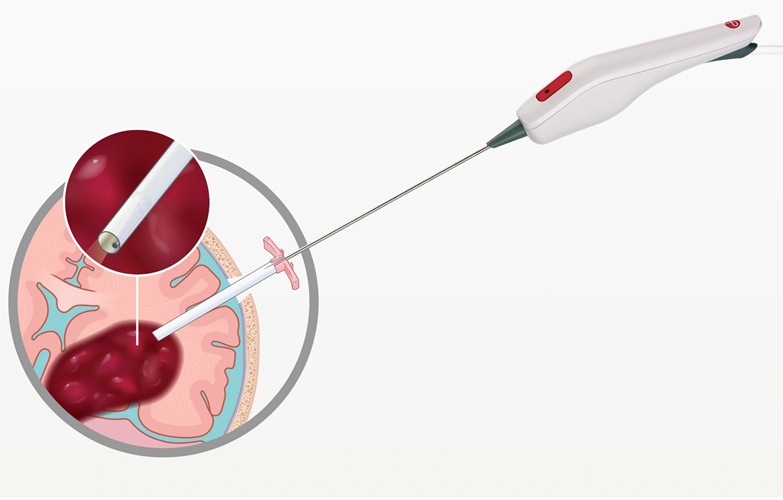
Minimally Invasive Endoscopic Surgery Improves Severe Stroke Outcomes
Intracerebral hemorrhage, a type of stroke caused by bleeding deep within the brain, remains one of the most challenging neurological emergencies to treat. Accounting for about 15% of all strokes, it carries... Read more
Novel Glue Prevents Complications After Breast Cancer Surgery
Seroma and prolonged lymphorrhea are among the most common complications following axillary lymphadenectomy in breast cancer patients. These postoperative issues can delay recovery and postpone the start... Read morePatient Care
view channel
Revolutionary Automatic IV-Line Flushing Device to Enhance Infusion Care
More than 80% of in-hospital patients receive intravenous (IV) therapy. Every dose of IV medicine delivered in a small volume (<250 mL) infusion bag should be followed by subsequent flushing to ensure... Read more
VR Training Tool Combats Contamination of Portable Medical Equipment
Healthcare-associated infections (HAIs) impact one in every 31 patients, cause nearly 100,000 deaths each year, and cost USD 28.4 billion in direct medical expenses. Notably, up to 75% of these infections... Read more
Portable Biosensor Platform to Reduce Hospital-Acquired Infections
Approximately 4 million patients in the European Union acquire healthcare-associated infections (HAIs) or nosocomial infections each year, with around 37,000 deaths directly resulting from these infections,... Read moreFirst-Of-Its-Kind Portable Germicidal Light Technology Disinfects High-Touch Clinical Surfaces in Seconds
Reducing healthcare-acquired infections (HAIs) remains a pressing issue within global healthcare systems. In the United States alone, 1.7 million patients contract HAIs annually, leading to approximately... Read moreHealth IT
view channel
Printable Molecule-Selective Nanoparticles Enable Mass Production of Wearable Biosensors
The future of medicine is likely to focus on the personalization of healthcare—understanding exactly what an individual requires and delivering the appropriate combination of nutrients, metabolites, and... Read moreBusiness
view channel
Philips and Masimo Partner to Advance Patient Monitoring Measurement Technologies
Royal Philips (Amsterdam, Netherlands) and Masimo (Irvine, California, USA) have renewed their multi-year strategic collaboration, combining Philips’ expertise in patient monitoring with Masimo’s noninvasive... Read more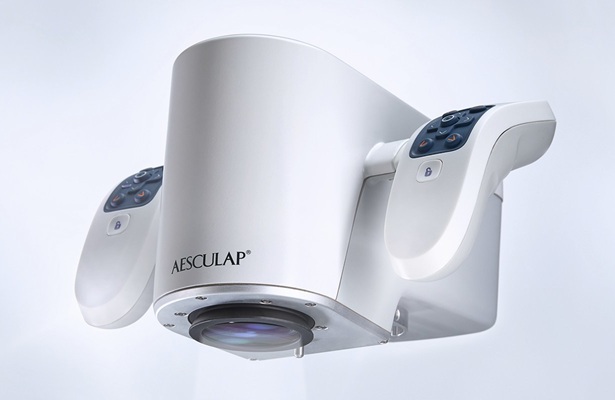
B. Braun Acquires Digital Microsurgery Company True Digital Surgery
The high-end microsurgery market in neurosurgery, spine, and ENT is undergoing a significant transformation. Traditional analog microscopes are giving way to digital exoscopes, which provide improved visualization,... Read more
CMEF 2025 to Promote Holistic and High-Quality Development of Medical and Health Industry
The 92nd China International Medical Equipment Fair (CMEF 2025) Autumn Exhibition is scheduled to be held from September 26 to 29 at the China Import and Export Fair Complex (Canton Fair Complex) in Guangzhou.... Read more